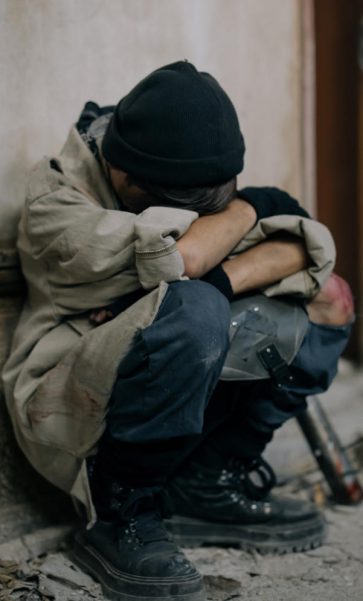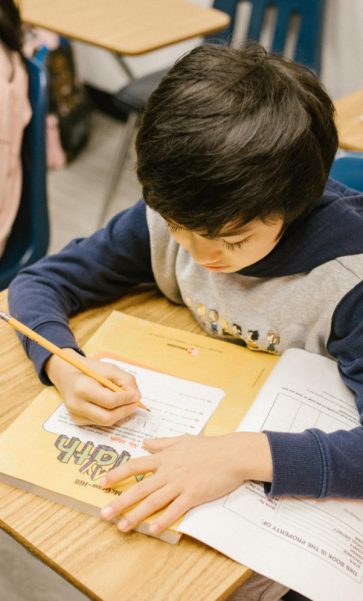This is an article that touches my heart because I have a two-year-old little girl, whom I cannot imagine working for a living until she is old enough to do so, I mean when she is of age. We have to cover this subject, moving a little bit away from our personal situation, because of the weight of this world situation. However, my vision can only be given from my experience and what somehow concerns me. That is why I am going to take as an example the two countries that are of great importance to me, one because it is my place of origin and the other because it is now my second home.
What is wrong with child labor? What is good about it? These are very subjective questions that many of the leaders had to ask themselves in order to establish laws to protect children worldwide. Although, we know perfectly well that each country and culture has different laws and traditions that influence the vision or definition of child labor.

There is also a point that we must clarify and that is that child labor does not refer to collaboration with normal household chores. Nor with teaching children to be tidy and responsible with their things and their duties. But to be abused, exploited, for example, cleaning the whole house or being in charge of their younger siblings, also to help in some family business or not that puts at risk their physical or mental integrity. Whether or not they receive financial compensation for their activities.
Mexican Data
Unfortunately, my country of origin is one of those that still have a serious problem with this issue. Well, just in 2019 it was recorded, about 3.3 million children and teens were in a situation of child labor in Mexico, this is the estimate of the National Survey of Child Labor (ENTI) that like all statistical data in Mexico are recorded and published by the National Institute of Statistics and Geography (INEGI).

Now we have to imagine such a high number of children to understand the magnitude of the problem and the situation of these little ones. These are children between the ages of 5 and 17 years old, and what they represent is no more and no less than 11.3% of the population in that age range (28.5 million) of the whole country.
This was detailed by INEGI’s president, Julio Santaella, during the presentation of the survey. “Of these 3.3 million, 2 million were in non-permitted occupations, market activities. And 1.3 million were in household chores in unsuitable conditions.”
In Mexico, the regulation of work for minors lists a series of activities that are permitted and those that are not. The permitted ones are normally related to working for the family, that is, when a family has a family business and the child can perform simple tasks to improve its operation, it is in a certain way regulated and permitted. Even so, I believe that there is a lack of specifications, and more control over these family businesses, to prevent them from becoming child exploitation.
However, this is not as worrying as the market work with non-permitted activities that includes those who work under the age allowed by law, or who, being of age, work in dangerous occupations, sectors or places; long hours, night shifts, or in jobs expressly prohibited by the Federal Labor Law; risky activities such as construction, bars, canteens, agricultural and livestock activities, among others.
From this, I can only say that we are quite far from eradicating child labor, but we must do our part to improve this precarious situation.
German Data
I started looking for the data provided by Germany directly, without much success, but I managed to find an interview from a few years ago, and I think it is important to highlight what is said here. From my experience, I can say that it is true. Here I don’t see children selling sweets, or supporting in the cafe or family restaurant, but of course, I don’t know every corner of the country.
Berlin, Jun 12 (Notimex) – Child labor in Germany is accepted, regulated by law and there is no structural exploitation as such. According to the German organization “Assets against child labor”, “in Germany, there is no structural exploitation of child labor in the so-called ‘formal sector’ of the economy”. It said that “the exploitation of child labor also takes place” in the informal or underground sectors of the economy. In particular, of minors in the prostitution sector, which in some cases have connections with the production of pornography. According to estimates by this association, between 10 and 20 thousand children in Germany are exploited in this sector, although the organization pointed out that “the underground figure is much higher”.

I would like to pause here. Prostitution in Germany is regulated, but obviously not that of minors. This is something that I did not talk about in the Mexican data, because the information was not available, since in Mexico prostitution is not regulated, only “red or pink” zones are created so that people can see that this is the area to pay for sexual “services”. But I must safely add that this is also a situation for Mexican children. Many of them are victims of pornography producers and pimps.
In Germany, there is also the phenomenon of accepted and voluntary child labor. The most common occupations are delivering newspapers, taking care of younger children, walking other people’s dogs, tutoring other children, and participating in family businesses. Now we are talking about the fact that most of the children doing these jobs are teenagers.
In a population of about 80 million people, about 13.4 percent are between the ages of zero and 14 in Germany. Up to 40 percent of all 12-16-year-olds are in some form of work. In fact, according to the German Constitution, “the occupation of children for commercial purposes is prohibited online from the outset,” and by children we mean those who have not yet reached the age of 15.
From the age of 13, children may be employed “under certain conditions and with the permission of their parents”, and above all they must do light work that does not harm their health, and their activity must be limited to two hours a day, or three hours in the case of agricultural activities in family businesses, but they may not work on Saturdays, Sundays and holidays.
I make a small comparative compilation here between the two countries. In theory, in both countries child labor is regulated, practically the same. But due to the economic difference of the populations of both territories, we can clearly see that the results are not the same.
As they are not the same population, different measures must be taken. To make an action plan according to the needs of our children. After all, we always say “children are the future”.
Global data
The unfortunate situation is not isolated, it affects all children worldwide, of course in some places more than in others. I will spare you the trouble of looking up the official UNICEF data.
Millions of children work to help their families in work that is neither harmful nor exploitative. However, UNICEF estimates that about 150 million children aged 5 to 14 in developing countries, about 16% of all children in this age group, are involved in child labor. (UNICEF, The State of the World’s Children 2011, UNICEF).
The ILO estimates that worldwide, some 215 million children under the age of 18 work, many on a full-time basis. In sub-Saharan Africa, 1 in 4 children aged 5 to 17 work, compared with 1 in 8 in Asia and the Pacific and 1 in 10 in Latin America. (ILO 2010 data on child labor). Although the overall figures indicate that more boys than girls are involved in child labor, many of the types of work performed by girls are invisible.
It is estimated that approximately 90% of children involved in domestic work are girls. (UNICEF, The State of the World’s Children 2011, UNICEF). Although the prevalence of child labor has declined in recent years except in sub-Saharan Africa, where it is increasing among children aged 5-14 years (ILO Child Labor Data 2010), it continues to harm the physical and mental development of children and adolescents and interferes with their education (Sources: UNICEF, The State of the World’s Children 2011 and UNICEF Child Info webpage on child labor).
Child labor reinforces intergenerational cycles of poverty, undermines national economies, and impedes progress toward achieving the Millennium Development Goals (see 2010 MDG Summit Outcome Document, p.13).
It is not only a cause but also a consequence of social inequalities reinforced by discrimination. Children belonging to indigenous groups or lower castes are more likely to drop out of school to work. Migrant children are also vulnerable to hidden and illicit labor.
Child labor and poverty are inevitably bound together and if you continue to use the labor of children as the treatment for the social disease of poverty, you will have poverty and child labor till the end of time. – Grace Abott-
UNICEF supports the Roadmap to achieve the elimination of the worst forms of child labor by 2016, which calls for an integrated response to child labor. UNICEF supports communities to move away from cultural acceptance of child labor while assisting strategies and programs that provide alternative sources of income for families, access to childcare, quality education, and protective services. UNICEF also works with employers and the private sector to assess and address the impact of their supply chain and business practices on children.
After all this information, you will realize how bad we are in this area. How much is missing to ensure a happy and safe childhood for every child? That is why it is important, as much collaboration as possible.
Importance of the general topic
How we can measure the importance of each topic is impossible and it is up to each person to know how much weight he or she wants to give to situations of this nature. In spite of this, I would venture to say that the importance of the topic is extensive and becomes too much. By this, I mean that all countries should be acting now, beyond what has been done so far.

We must recognize the progress that has been made, but this does not mean that we should be satisfied with this or that we should say that something is being done. Of course, something is being done, there are hundreds of organizations that are trying to do their bit, but it has not been and is not enough. We can speculate a lot about this and say that the fault lies in corruption. But this is only a justification for the world’s leaders not to look at this.
On another level, perhaps more spiritual or moral, we could even say utopian in nature, making visible, talking about, and moving the issue of child labor is of utmost importance. The future depends on childhood. If we have fuller childhoods, we can make changes at more significant levels and in other fields, such as the environment.
Particular and personal point of view
From my perspective and privilege, perhaps, I can only be against child labor. Childhood is a stage that should be enjoyed and filled with security and protection by adults and regardless of the circumstances, the primary needs of all children should be met. Obviously, I know that this is not a reality and it is a very difficult point to sustain because this does not provide money and the distribution of wealth is not equitable.
So more realistically, there is a lot of work to be done on the road to eradicating child labor. Whenever you have the opportunity to be part of improving a child’s life, to open your heart and give them a little bit of happiness or a chance to just be a child, it’s something they will never regret.
Chil labour perpetuates poverty, unemployment, illiteracy, population growth, and othe social problems. – Kailash Satyartchi-
It was important to me to be able to expose the data because for many without them, words are empty. For me, it is enough to visit my country and see the barefoot children in the streets, to see the precarious situation and the way of life of so many families and how society behaves in this regard. Most of them are invisible people who barely cause them pity.
This in real life, but I must add the great hypocrisy of today. Well, surely they will visualize an image of a poor child working, idealizing and romanticizing the situation of the little one because he wants to get ahead and is not stealing. But, this is not something to applaud just for the sake of it, what we have to do is to denounce to the corresponding authorities and demand that they safeguard the welfare of these little ones.
My criticism may be very harsh and you may wonder if I do anything to change the lives of these little ones, well, I do what is within my reach. From writing about the subject to donations in kind and in money.
What influences the continued existence of child labor?
There are several points that are involved in the continued existence of this problem. The main element is poverty. Then the lack of education, referring to the difficulties to access schooling. The lack of empathy and action from both the leaders (the government) and the people.
You can’t regulate child labor. You can’t regulate clavery. somethings are just wrong- Micheal Moore-
We also find more particular situations that interfere such as the number of members of a family, the schooling of parents, machismo in the family, domestic violence and we can continue listing the possible causes.
Certainly, if one’s stomach is not full, one cannot think about education or other important aspects for the healthy development of each individual. This is why it is important to continue implementing and supporting programs for education and the eradication of child labor. Because all these problems go hand in hand.
Conclusion
As you could see from the title there is a comparison that I establish between child labor and slavery as a loss of childhood. Why do I consider child labor as slavery? Because childhood is a short stage in the life of a human being, but it has an extremely important weight for its development.
Because by treating an infant as an adult responsible for bringing the sustenance home, he is being enslaved, he is doing work in a non-voluntary way that leads to the loss of this stage of development, jumping exponentially to the stage of adult life.
Many children are forced to perform these tasks and, according to the data, many of these tasks are risky.

Again, this should not be confused with teaching children responsibility, to take care of their belongings, to keep the place where they live tidy, in collaboration with the other members of the family. Supporting and helping the family.
We are talking about all those jobs, in which the child works in excess and with risks, besides the salary is not the corresponding one and he does not get it, but the parents or tutors. This is what we want to eradicate.
In closing, I would like to invite you, dear SOLKES readers, to get more involved in this issue, take action, see what you can do, make donations, look for solutions, two heads are better than one, as the saying goes. So let’s expose the issue, let’s not be silent, let’s give instead of take away. The first thing to make a change is to accept the problem and start raising the awareness of the masses.
When a child cannot play and study, develop without worries, then he can become a dysfunctional adult, in different areas, he may know how to work, but not how to love. His intelligence may be limited by the premise that I do not need to study. Since I never need it. There is also the possibility of finding a human being resentful because he feels that life is unfair and at the same time he is in search of justice, with possible consequences for others. This is all speculation. However, we must recognize how important it is for children to be children; ensuring the well-being of the world’s inhabitants should be our priority.


